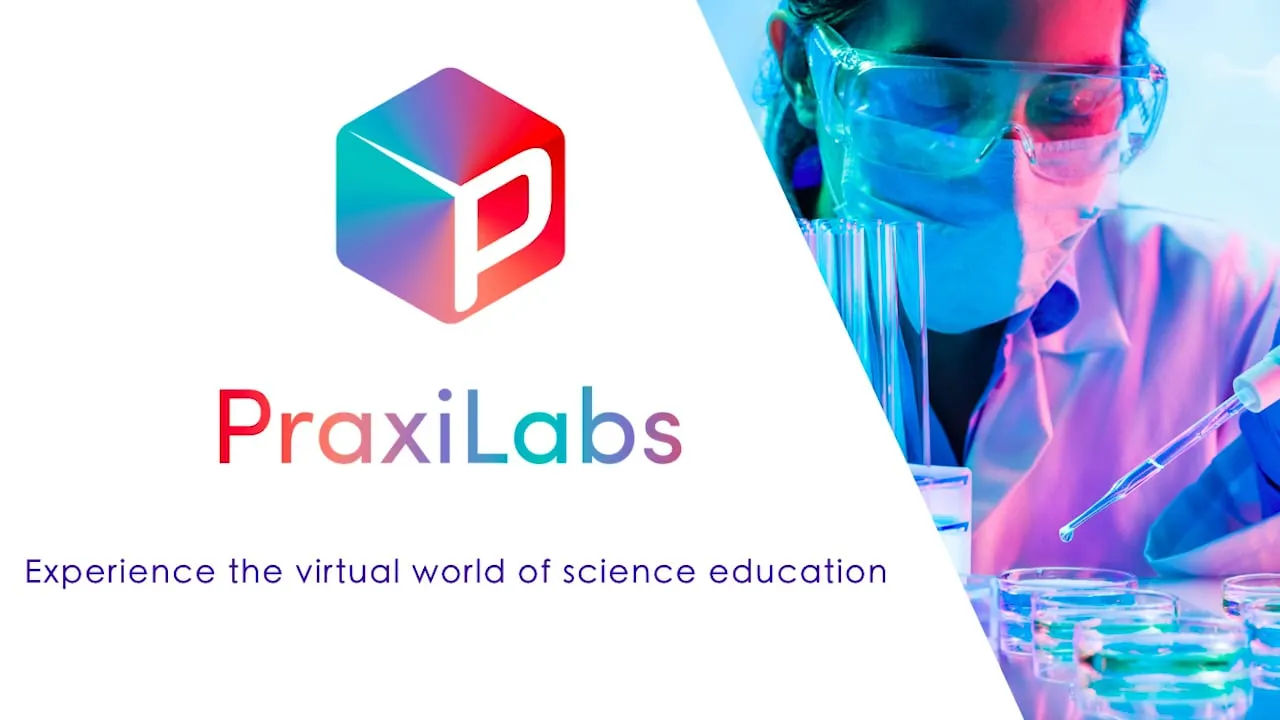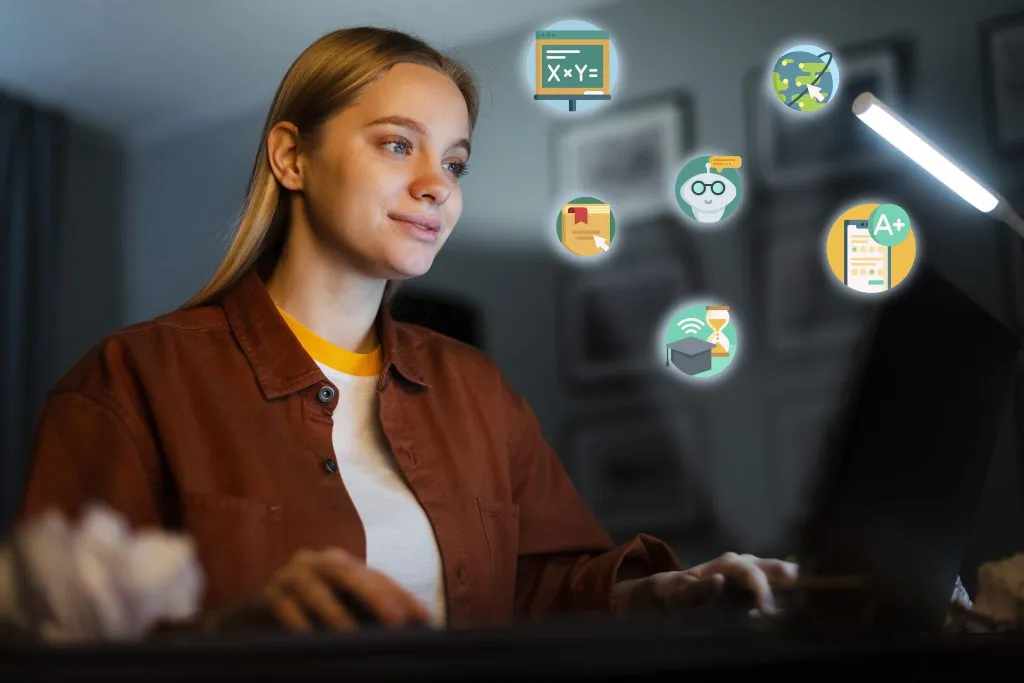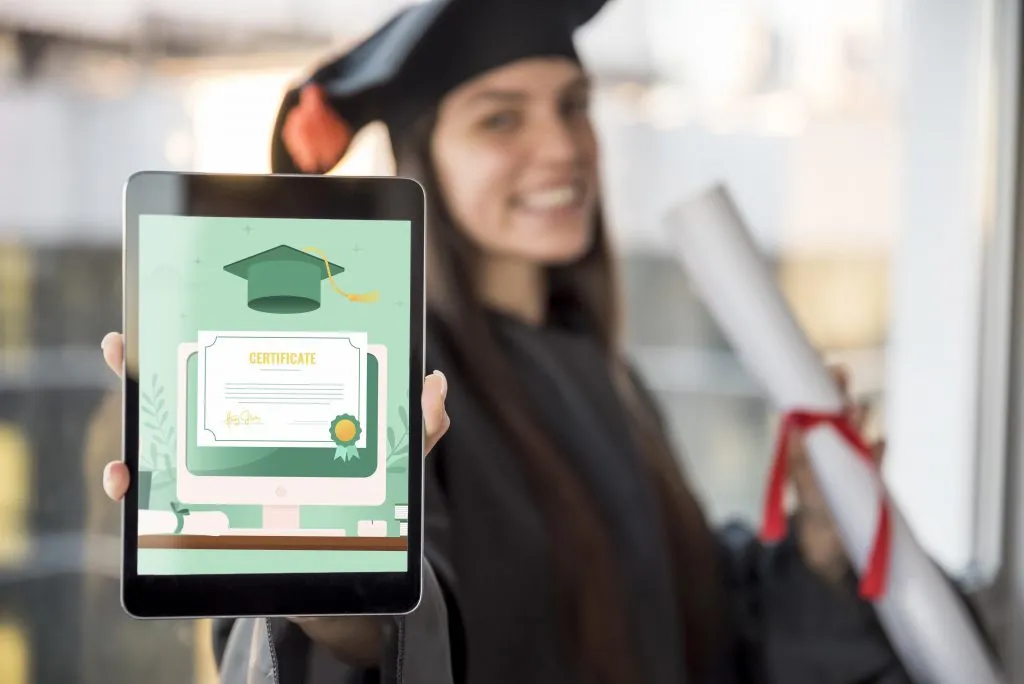Last Updated on October 11, 2025 by Muhamed Elmesery
Science learning or science education is the teaching of science to non-scientists, such as school children, college students, and also adults within the general public.
The science learning field can include work in science content, science process (the scientific method), social and citizen science, and some teaching pedagogy.
In the last decades, science learning was based on traditional teaching methods. But through the last few years, we have noticed a significant change due to the revolution of the “information age.”
Get Started Praxilabs For FREE
Now we can see various applications for the internet and electronic devices in the world of science learning and teaching. Advances in computer and network technologies may facilitate and provide constructivist and cooperative learning environments, thus paving the way for cooperative activities and constructivist learning.
Now let’s take a look at the main emergent technologies that are applied in science learning. Here you can find four effective technologies that have a breakthrough in science learning.
Table of Contents
Virtual labs, Simulations, and Dynamic Visualizations
Unlike computational thinking, the amount of research about using virtual labs and simulation in science learning is large. There are a large number of recent studies that discuss the efficiency of tools designed to simulate science labs, field trips, and scientific phenomena with relatively high fidelity.
These studies include varied simulations that varied in terms of functionalities (i.e., simulation of a phenomenon, and virtual lab), disciplines (chemistry, biology, and life sciences), and purpose for integration (i.e., assessment, teaching, or both).
There are 14 papers that have been published in the Journal of Research in Science learning which is the top journal in the field. These papers include 2 studies on video games, 10 on integrated simulations, and 2 on interactive dynamic visualizations.
The authors employed different types of simulations, games, and visualizations in these papers for assessment, learning, and problem-solving. They used different metrics to measure the effectiveness of the tools used in these studies, and an overall benefit was observed for conditions where these tools were employed.
For example, Scalise et al. (2011) published a synthesis of 79 studies integrating science simulations (73) and virtual labs (24). 53% of these studies found observed learning gains as a result of use of simulations, 18% gains only under the right conditions, and 4% no gains reported.
Example for Virtual Labs
PraxiLabs is considered as one of the most interactive virtual labs. It aims to make scientific virtual labs easy to reach, easy to use, and affordable for educational institutions and schools. It not only provides scientific virtual labs but also integrates a rich content that helps students understand the steps of the experiment and provide them with additional information.
Create a FREE Virtual Labs Account Now!

The structure of PraxiLabs consists of a team that is always keen to communicate with the educational institutions and science learning experts to learn the proposals for modernization and development and to ensure that the modern trends in the fields of laboratory experiments are kept up to date.
It helps students and teachers to enter a 3D virtual world, which helps students understand the curriculum more accurately and in detail. The labs are available in both English and Arabic and help students interact more with multiple interactive options and responsive responses, giving students experience and practical training in science curricula.
PraxiLabs is compatible with the educational platforms known and modern and can be accessed from anywhere. So your personal virtual lab goes with you wherever you go and it is one of the most important features of E-learning. In addition, it saves a lot of money spent on expensive equipment, as it dispenses with using chemicals in the laboratory, thus giving you a safer and less expensive alternative.
Computational Thinking
In education, computational thinking (CT) is a set of problem-solving methods that involve expressing problems and their solutions in ways that a computer could also execute. The amount of research about computational thinking in science learning is limited. So we will focus on three papers published in the Journal of Science Education and Technology, one of the best journals in the field of science learning and education.

According to Weintrop et al. (2016), computational thinking can be defined in the form of a taxonomy consisting of four main classes:
- data practices (collecting, creating, manipulating, analyzing, and visualizing data).
- modeling and simulation practices (using computational models to understand a concept, find and test solutions, assessing, designing, and constructing computational models).
- problem solving practices (preparing problems for computational solutions, programming, choosing effective computational tools, assessing different approaches/solutions to a problem, developing modular computational solutions, creating computational abstractions, troubleshooting, and debugging).
- systems thinking practices (investigating a complex system as a whole, understanding the relationships within a system, thinking in levels, communicating information about a system, and defining systems and managing complexity).
The author added some examples in order to illustrate these practices. For example he added a lesson that explains how students can investigate the laws of physics that govern video games.
Berland and Wilensky (2015) compared the effectiveness of curricular units in supporting students’ complex systems and computational thinking in four urban middle school classrooms. The first unit was based on a physical robotics participatory simulation and the other unit had a virtual robotics participatory simulation.
The results showed that the students outcomes have been improved using both units with the same amount. But there were some differences in their perspectives on the content. The students with the physical system were more likely to interpret situations from a bottom‐up perspective, and students using the virtual system were more likely to employ a top‐down perspective.
The outcomes from this study suggest that the medium of students’ interactions with systems can lead to differences in their learning from and about those systems.
In another study, Leonard et al. (2016) tested the potential of using robotics and game design to engage youth in computational thinking. He tried to explain how the use of LEGO EV3 robotics and Scalable Game Design software influenced rural and indigenous students.
He found that student attitudes toward and interest in STEM careers did not change significantly. Students were able to infuse some elements of culture and place into game design. Students’ self‐efficacy scores on the construct of computer use declined significantly, while the constructs of video gaming and computer gaming remained unchanged. Self‐efficacy in video gaming increased significantly in the combined robotics/gaming environment compared with the gaming‐only context.
Gaming and Technology‐Mediated Play
There are various studies that showed the growing number of science educators who use educational computer games. Simulations are the most popular type of games that are used in the educational process. For example C.‐Y. Hsu, Chin‐Chung Tsai, and Liang (2011) simulated the phenomenon of shadow formation in daylight using a computer game to teach a group of preschoolers. Also Anderson and Barnett (2013) taught the electrostatic phenomena to the middle‐school students using the 3D computer game Supercharged, which explains how charged particles interact with electric and magnetic fields. Using Code Fred: Survival Mode, Price et al. (2016) simulated the human body systems.
Considerably less common in science learning is the use of educational games that do more than merely simulate natural processes. Also relatively uncommon is the use of video games for science learning at the elementary school level. This is a sharp contrast to middle‐ and high‐school, where science educators have more commonly favored the use of video games as a means to engage students in inquiry‐based science learning. To do so, these educators have typically resorted to “computer‐based narrative discovery learning games” in an online collaborative environment accessible to K‐12 students.

Technology of Online Science Learning
Online science courses are a virtual workplace that gives you advantages of time and place flexibility. As long as you meet your deadlines and communicate with your instructor and peers, it doesn’t matter where or when you fulfill the requirements.
That’s besides taking into consideration that online study requires just as much work as an offline study. And the amount of time you dedicate is also about the same. However, the online format—just as a virtual workplace—makes you afford more flexibility. Often, you are required to do the same tasks every week (e.g., review the learning objectives, complete the assigned readings, go through the lecture materials, participate in the discussion boards, and submit assignments).
Adjusting to an online learning model could be a challenge at first. But once you adapt to the format, there are numerous benefits to be realized. No matter the reason you choose to pursue online education, earning an online degree can help prepare you for career advancement and demonstrate key skills to potential employers.
Here you can find some features for online courses.
Flexibility
Not many people have the ability to take time off from work to commit to a full-time graduate program, and others often travel for work. For those who still need to juggle working and going back to school, the flexibility of an online program provides individuals with the opportunity to learn while still working and growing professionally.
Additionally, students don’t always feel comfortable asking professors to repeat a point they made in their last lecture or dive into deeper detail on a specific topic. When learning online, you can revisit past material or stop the lecture to perform additional research or organize your notes.
Improve Technical Skills
Your online degree also equates to strong technical skills, a definite plus for any job seeker. As part of your coursework, you will likely need to utilize digital learning materials, get familiar with new tools and software, and troubleshoot common issues. After a program’s worth of technical hurdles, big and small, an employer could trust that you are versed in common collaboration tools, content management systems, and basic troubleshooting.
Time Management
Juggling work, family, and school isn’t an easy thing to do. Employers recognize this and admire the time management skills it takes to balance all three. Because there are no set classroom times within an online degree program and students have the flexibility to create their own schedules, it’s up to the student to proactively reach out to faculty, complete assignments on time, and plan ahead.

Self-Motivation
By successfully earning your master’s degree online, you’re demonstrating that you can practice time management and are self-motivated, which are among the top 10 employability skills employers want to see in new hires. By succeeding in earning an online degree, you prove that you can tackle multiple tasks, set priorities, and adapt to changing work conditions.
Critical Thinking Skills
Online learning facilitates the ability to think critically about what you do every day. The goal in the classroom is to challenge you to think differently, and employers want you to do that, too–to think critically in your role at work. Mastering this skill is what will set you apart as a student and as an employee.
Critical thinking plays a role in any type of education; however, online learning forces you to develop your critical thinking skills in ways that you might not have practiced in an in-person classroom setting. This sort of self-paced and self-motivated learning demonstrates to future employers that you have the ability to think critically and overcome any obstacles that might stand in your way.
Broader, Global Perspective
Students in online programs come from all over the world. Because of the ability to log on from any location, class discussions feature a broader range of perspectives, helping you enhance your own cross-cultural understanding. Students then not only have the opportunity to network with people from around the globe but can also broaden their perspective and become more culturally aware.
Businesses are looking for employees who can innovate, and innovation often comes from outside your immediate world. If you’re interested in entrepreneurship, for example, hearing how other countries adopt certain technologies or approach specific industries can inspire new ideas or improve an existing concept you’ve been developing.
Being exposed to new ideas from professionals in other countries may spark the creativity of your own—creativity that can turn out to be valuable for your organization.

Virtual Communication and Collaboration
Learning to work with others in a virtual environment can make you a more effective leader. You’ll develop critical leadership skills by utilizing specialized knowledge, creating efficient processes, and making decisions about best communication practices, such as what should be discussed in-person or electronically.
In an online program, you’ll also participate in discussion boards with your classmates, communicate with professors via email, and collaborate through various software programs. As the program progresses, you’ll get better at pitching your ideas and making strong, succinct, professional arguments through text.
 PraxiLabs A virtual world of science
PraxiLabs A virtual world of science






